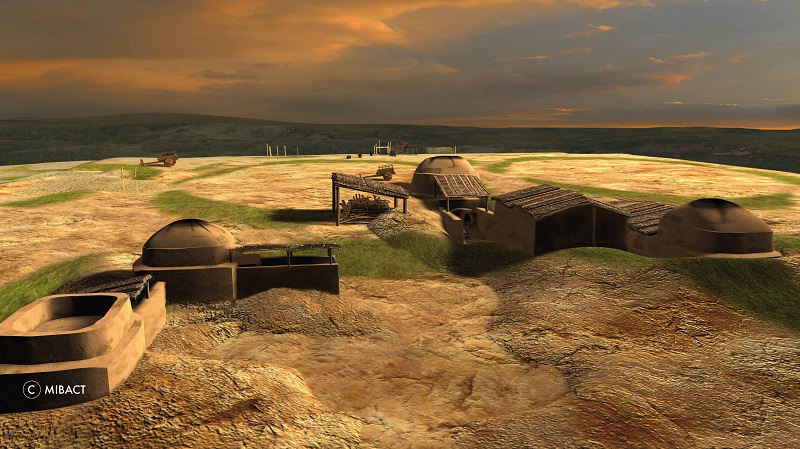L'area archeologica delle Fornaci Romane
Gli scavi archeologici effettuati tra il 1985 e il 1988 in Loc. Fornaci dei Gorghi, a Lonato del Garda, hanno individuato un complesso artigianale costituito da sei fornaci verticali di diversa tipologia, due a pianta circolare e quattro a pianta quadrata o rettangolare, nonché alcuni resti di vani funzionali all’attività produttiva, una catasta di embrici impilati, reperti di materiale prodotto nella fornace (tegole, embrici, mattoni di varia misura, pesi da telaio), resti di ceramiche di uso domestico probabilmente utilizzati dagli operai del sito.
L’analisi e la datazione dei reperti ha permesso di definire l’uso del complesso dalla prima metà del I agli inizi del II secolo d.C. Dopo un uso continuativo di circa un centinaio d’anni il complesso venne abbandonato probabilmente a causa dell’impaludamento delle aree topograficamente più ribassate, dove erano presenti buona parte delle fornaci.
La vocazione artigianale dell’area nel tempo, testimoniata dal toponimo della località, è stata confermata nel 2002 con il rinvenimento, nei pressi delle Fornaci Romane, di due fornaci affiancate, per la produzione di laterizi e per la produzione di calce, datate al XIV secolo.
The ancient brick and tile yard at Lonato was brought to light during building work for an electricity substation commissioned by ENEL (an Italian electrical utility company) and was partially excavated by the Soprintendenza per i Beni Archeologici della Lombardia (The Lombardy Superintendent for Archaeological Heritage) between 1985 and 1988. The site was positioned on a slope, the lower part of which was prone to flooding: this is perhaps why the area was originally abandoned after roughly a hundred years of use (from the first half of the 1st century to the early 2nd century AD), and may also explain why the kilns found furthest from the base are those that are today better conserved.
The choice of site would certainly have been determined by the vicinity to a large wooded area (the silva in ligana), necessary for the supply of wood for fuel, water from streams and roads for transport on land, and close by, the lake, itself an excellent point of transit with many potential markets along its shores. As for the other raw material, although clay deposits were also abundant in the area, analyses have shown that the tiles made here were manufactured using clay transported from a possibly local, but as yet unidentified source.
The archaeological excavations involved six raised kilns of differing typology, two circular and four rectangular or square, all located a short distance from each other, which were assigned the letters A to F during the course of the project.
A confirmation that the area was dedicated to this kind of activity over a very large time span is to be found slightly to the west of the Roman brickyard, where an archaeological excavation in 2002 brought to light the lower sections of two medieval structures of differing dimensions, built side by side and against the remains of an earlier artisanal building.


